When Yamaha launched the WR250F in 2001 they changed the face, the look, the sound, of enduro, probably forever. Now – after a 14 year wait – we have the first real renaissance of the model. And with the YZ’s reverso-motor, it looks like they’ve gone and done it again. The back-to-front-to-the-future begins right here… (Originally published in 2015)
Should a good bike feel right from the word ‘Go’? It probably should. Yamaha’s new WR250F certainly felt right – lithe and athletic – from the very first turn of its wheels. And after four hours of intense testing it was still feeling so very right, or ‘wrongfully right’ as Yamaha liked to put it.
Now we could start this story with a history lesson about the WRFs, or perhaps a quick-fire run-through of the amazing technology Yamaha have packed into this remarkable machine. But in a simplistic nod to their back-to-front engine in the new WR250F we thought we’d begin with the ride impressions first, and then get on to the other stuff later. Because that’s the way we roll…!
Riding the Reverso
How the new WR-F rides is exactly like the new and dazzling YZ250F motocrosser… that’s to say, with an amazing sense of agility, lightness and authority on the dirt – only with all the right little mods having been made to make it just-so for the trails, as against a pure track bike. So it follows the contours of the trail, it hooks precisely into the soil, and makes such sweet acceleration that at times you’d swear you were riding a 300F.
You can’t believe it can be that good, that quick and that well fuelled, but it is… And when the track breaks up into gnarly little jagged rocks and awkwardly angled stone-steps, it’s good there too, with great suspension and precise handling so it hits the spot you aim at and carries you over the obstacle with no apparent effort. Enduro made easy? Yeah, quite probably.
It might have helped that we rode an Akrapovic-equipped example first (the exhaust being a genuine Yamaha accessory). For it truly has the most crisp throttle response you could want – it sounds and feels like an EWC factory racer but oddly enough is not really any louder than the stocker, just a little bit sharper and more crackly – less ‘wooffley’. This bike felt so alive in your hands that it was like holding a new born lamb… it just wanted to gambol and spring everywhere along the trail. That enthusiasm made you feel special, ready to reset your boundaries… take on the world.
The standard bike has a softer set-up to the power delivery – a touch smoother at the bottom perhaps – and maybe less sharp on the very first crack of the throttle. That too has advantages, though the super-soft exhaust kind of stifles the motor a touch at all revs, so that you find yourself working the throttle slightly harder to create the same effect. Whether Akrapovic-equipped or not however, this is a seriously class act: so fast, so effortless, so light, so predictable, so comfortable, so damn good…
Sound Garden
How to describe it? At a standstill, in neutral, you twist that throttle and the motor – light and sweet as you like – does that short, sharp ‘Brrraaap’ of the factory racer. Then you snick it into first, ease out the light (cable actuated) clutch and the WR250F just goes…
The rev-up under load feels virtually as quick as when static. The six gears – notionally wide-ratio – feel so deliciously close and well-matched to one another that there’s no noticeable loss of acceleration through gear-changes because the engine never drops out of its torque-curve. You can accelerate ‘full gas’ easy as you like, gear after gear, until you’re really hauling. Then you shift your weight back and pin the brakes for the upcoming turn. No drama. The bike pulls up sharply and sweetly, re-centralise your weight, drop into the seat and fire out of the turn. Easy.
But take it to a big climb – as we did – punctuated with two rock steps at the bottom and you can trickle the WR250F up the hill on almost zero revs in first gear, clawing your way up, hand over hand, your skill at keeping your balance being the only issue. Such is the perfect way it fuels that it’ll even do it in second, pulling cleanly, effortlessly from tickover, without fear of stalling, though a finger on the clutch seemed a sensible precaution, even if it wasn’t needed.
Then back onto the fast stuff and you’ll chase the gears before backing it down and backing it into the turns, so easy. We watched Yamaha Off Road Experience’s Dylan Jones taking enormous liberties letting the WR250F step way out of line over the loose stuff on the outer edges of the trail. That’s a measure of the confidence in this bike. And somewhere out in the distance, gone before we’d even got into gear, was our guide (over the Sardinian trails) Frans Verhoven – Dakar racer of note – who was last seen fleetingly, sideways and on the gas going into the corners. Yep, when something is this easy to ride you can reach for new limits.
History Now?
No, give me five more minutes. I want to stay with the ride. Let’s talk handling. Yeah, of course it’s sweet. Nail the gas and yes it hauls, most bikes do, but it’s the way it rides so predictably, so stable on the loose; and when you pitch it into a turn, even fast turns over loose hard pack, it’s a delight to ride. The confidence the front end gives you that it will stay planted no matter what, is a special feeling indeed.
Equally, we had a special test course laid-out that was a kind of micro-course, with really tight, virtually first gear turns (although the WR250F was always so happy to accommodate second gear), and here it was so easy to get the bike to change direction. With zero fuss at all times.
Much of that feeling is due to Yamaha’s mass-centralisation program. Their what…? Well the idea behind that rearward sloping cylinder, the low-slung fuel tank, the way the exhaust tucks in centrally behind your right knee – all of that stuff is designed in such a way as to bring the heaviest components as close to the bike’s centre of mass as possible. The theory is that the more you centralize mass, the easier it is to turn. Actually it’s not a theory… it’s pure physics and it works.
So the WR250F turns, fast and slow corners without an issue. And helping it to do that is a seriously plush suspension set-up. Kayaba make damn good kit and this stuff – speed sensitive forks (SSF) and all – is lifted straight from the motocrosser, but valved for the trail. It behaves impeccably. For our Sardinian test the Yamaha technicians had dialed-out a little of the standard compression damping to allow for the rocky terrain we were riding and the set-up felt spot on. And it must have been good because after fours hours of chasing the ever-disappearing Frans V, there were no blisters on the soft RUST palms.
And Relax
Okay, let’s stop riding now. Step away from the vehicle. If only it was that simple. Man it looks so good. Yamaha’s blue racers have always been classically beautiful. The colour is so perfect, but the shapes, the engineering, are thoughtful too. So if you ride for two hours, you’ll probably stand looking at it afterwards, for another ten minutes.
Owners are going to cosset these bikes, the act of cleaning elevated to new heights, you’re just going to be turning over the details, luxuriating in the finishes. It’s probably, in all honesty, no better finished than any other top enduro machine, but it’s bewitching all the same. The engine maybe backwards, but you walk away from the bike backwards as well, and with the obvious exception of the gawky headlight you’re smiling as every new angle only flatters the bike more.
The beauty hides the clever engineering. What’s making this ride so special is that reversed-engine layout. The cylinder is inclined backwards, closer to the bike’s centre of gravity and with the reversed cylinder head everything under the seat is 180º about-face.
The throttle body and airbox are now located directly behind the steering stem (where it can find the coolest, cleanest air) and where it can draw from a greater height, massively improving the bike’s wading depth. There’s a short, straight induction path for the EFI, angled directly downwards from the airbox into the cylinder. And out back where a conventional carb and airbox would sit, well there’s only empty space. Okay there’s the exhaust port and header but that quickly makes a sharp right turn out of the back of the barrel, and like a boa constrictor, snakes around the left, then front, then right side of the cylinder before meeting with the muffler. Presumably it’s done this way in order to find the required header length, and to improve the cooling. A shorter – more direct – header routeing would’ve been too noisy, too hot and wouldn’t have offered the same amount of torque.
This design of exhaust is much more inboard than on any other bike. Centralising more of the mass. There’s no tail wagging the dog with this muffler. And thus the fuel tank is rearward and correspondingly lowered, kind of in the proximity of where the airbox would have been. In fact it sits so snugly under the seat you’ve a job to find it at all. And isn’t that a better place than having all those kilos of fuel high up sl;oshing around and putting weight over the steering? The WR-F’s tank is smallish at 7.5 litres, but the injected engine is pretty efficient. We ran it for two hours – Frans V riding his machine full gas all the time – with no hint of running dry.
So you look at this reversed layout, this mass centralisation, and although it’s not an entirely new concept, it works so well and looks so right that you wonder why all manufacturers don’t adopt it.
Motormana
You have to admit Yamaha have used every technological advance it would seem possible to apply to this bike. We get excited about the engine because it’s reversed. But that’s really only the start of it, this unit is a proverbial jewel. For instance not only is the cylinder rearward inclined, but inside it Yamaha have applied the desaxe principle to the crank-piston relationship so there’s an offset as the piston reaches top dead centre (TDC) which reduces frictional losses. In that fractional world of extracting maximum power from a high-revving small capacity unit, stuff like this makes a big difference.
We should also appreciate this motor is all-but identical to the current YZ250F. That means it’s running the same bore and stroke, the same compression ratio, more or less the same cam profile, the same forged aluminium piston, the same carburized crankshaft. We asked the Yamaha tech’s what the power output was, but they never claim horsepower figures (they said). But they did comment that it can make the same power as the YZ250F. Obviously with the standard silencer it’s held back from immediately doing that, but change the exhaust, plug-in the Yamaha Power Tuner to the ECU and choose the YZ250F map and bang there it is, full power and then we’re talking something around or exceeding 40bhp at the crank…
Yet this is still so much an enduro motor. There’s a six-speed gearbox in those cases where a five-speed cluster lives in the YZ250F. How do they cram the sixth gear in? No issue, the engine cases were designed to take the six-speeds right from the start, the motocrosser living with a small 5mm spacer in lieu of that final pair of ratios. And there’s space too for a proper enduro-specific clutch which features totally different springs, plates and actuator. All of this running in an additional 200ccs (1100cc in all) of oil. Good for durability and reliability. That’s very Japanese that is.
And we have to admire the tech in the engine management too. The Power Tuner means you can personalise the power (and power delivery) to suit every rider from the newbie to the world champion. There are even pre-sets that will allow instant adaptation to kit like the Akrapovic exhaust. It’s a sign of their seriousness that Yamaha worked closely with the Slovenian firm to create the optimal competition exhaust for this bike and that exhaust is there waiting for you in the Yamaha range of genuine accessories, along with a GYTR billet clutch and other parts.
But – back to the matter in hand – we need to heap praise on the fuel injection. Yamaha gave the first WR250F a 37mm Keihin carb, later replaced that with a 39mm unit. Now we have a whopping 44mm throttle body. If you stuck a carb of that size on an engine like this, chances are it would bog and stall at low revs, unable to cope with the slower induction velocities. But with an exacting 10-hole injector and clever 3D mapping Yamaha can make this thing pull flawlessly from tickover to max revs, while having the capability to richen up sufficiently for the hunger of the rev limit. All the while being ultra-frugal, ekeing out the fuel and making that 7.5 litres last as long as possible. Details like this we often overlook, but they make modern riding so stress free.
Classy Chassis
It’s amazing that the alloy frame is still quite rare in enduro. The majority of European manufacturers still sticking with their steel frames – and doing a great job with those. A good alloy beam frame is still an awesome device, though, offering almost unmatched stability and integrity – loved by those who really hammer through the trails. This frame, identical to the YZ250F’s, is again a thing of beauty. It’s a ten-piece construction and Yamaha have employed every technique of working with aluminium to create it, so you have extruded, cast, forged even hydro-formed elements. And after that they’ve fine-tuned the flexibility of the engine mounts (there was rumour the engine is also placed a smidge more forward in the frame – although that’s unconfirmed) to give the right feel and feedback for enduro.
Matched with the aforementioned Kayaba forks and shock, this is as sophisticated a set-up as you’ll find anywhere in enduro. The settings are spot on – suggesting plenty of R&D time riding in the field rather than on the dyno. There’s savvy too, like the extra 10mm in stroke length on the rear shock, which reflects the way in enduro we like a level bike and long travel, where motocrossers are currently running the tail of their bikes lower and firmer. That’s Yamaha listening intently to the respective customers.
If we found one thing we didn’t warm to, it was the (tapered) handlebars. They felt too narrow, too low. Not enough to crow on about, but if it was our bike, yeah we’d be changing to our personal favourites. Maybe we’d like a better quality of brake and clutch lever too – like the Europeans fit. Yamaha keep their good levers (made by GYTR) in their accessories listing, but when you’re selling a premium product like this you have to ask why not go all the way? Especially when you consider how Yamaha have specced the top yoke with proper adjustability of the handlebar clamps. From a centre position you can opt to push the clamps a full 26.5mm forward or -10mm backwards. Nice.
Everywhere you look there are little details on this bike that tell you somewhere in Yamaha’s R&D department is a real dedicated enduro nut. Who, finally, after all these years, has been let out of his cage and he’s gone the full nine yards. The guy’s a dude…
Top Marks
There is so much more to tell, but we’re struggling for space. We’d say it’s worth holding back and saving all that extra information for a proper test back here on UK soil in a future issue.
In the meantime what can we say? We’ve found perfection? Not quite, but it’s good enough to move the game on and take the fight to KTM. Oddly enough the new WR-F weighs in at the exact same 118kg fully fuelled as the old bike. Is that progress? Well it’s a good 9-10 kilos heavier than a KTM, which sounds a lot. Actually it is a lot, but I can honestly say that the WR-F doesn’yt feel like that. The mass centralization makes it feel – if anything – even lighter than the EXC-F, but there’s nothing like a classic head-to-head test to sort this out properly.
If all this has made you want to buy one, make sure you get it properly sorted out and PDI’d by a good Yamaha dealer. Getting the thing uncorked and the right settings dialed in may sound like a faff but it’ll reap dividends. Yamaha’s new formula for success really works, and it’s already worked for one young South African called Brett Swanepoel who rode his new WR250F to second place in the recent Roof of Africa Extreme Enduro, beating no less a talent than Graham Jarvis on his customary 300cc two-stroke.
This thing… it’s the bike we’ve wanted Yamaha to make for years now. And having finally arrived it’s no disappointment. Something new, different and clearly so very effective. Just what the enduro paddock has needed. Yamaha have been absent from the front line of enduro for way too long, but with this bike they are slap-bang right back in the game. With bells on. A good bike? No. A great bike!
2015 YAMAHA WR250F
Price: £7249 (At launch in 2015)
Engine: 250cc, liquid-cooled DOHC four-valve 4T single
Bore & stroke: 77 x 53.6mm
Compression ratio: 13.5:1
Transmission: Six-speed, wet multi-plate cable clutch
Front suspension: 48mm Kayaba forks, 310mm travel
Rear suspension: Kayaba shock, 318mm travel
Brakes: 250mm disc twin piston caliper, 245mm rear disc
Tyres: Metzeler Six Days, 90/90-21 130/90-18
Wheelbase: 1465mm
Seat height: 965mm
Ground clearance: 325mm
Weight: 118kg (including oil and fuel)
Fuel capacity: 7.5 litres
Watch the video from the original 2015 Yamaha WR250F launch here…
Read about the Yamaha YZ250F which this bike was based on by clicking here… https://rustsports.com/metal/2014-yamaha-(yz)wr250f_5416.html
The RUST Magazine Yamaha WR250F Long Termer first appeared in issue 6 https://rustsports.s3.amazonaws.com/Rust%236.pdf
The bike was been featured in a number of issues of RUST and participated in a notable events including Round 1 of the Portugese R3 Rally Raid Series, ridden by JB himself in issue 23
https://rustsports.s3.amazonaws.com/Rust%2323.pdf and the epic Welsh Two Days in issue 15. Click below…
Leon Oosterhof, product manager off-road, Yamaha Europe
RUST: The WR250F must be a super-important model for Yamaha in the off-road sector?
LO: Yes, although to be fair the markets in Europe are all very different, we do have some that are into the 450s, the way the Americans and Australians are, and some like the UK that are into the smaller capacity, but yes this is a very important model for Yamaha.
RUST: You’ve taken your time bringing it to market…
LO: It’s been a wait, for sure, but for Yamaha in the off-road the focus has been on the development of the YZ motocross bikes first, so we’re glad to have this for 2015.
RUST: Would it be fair to say you’re lucky to get it here at all? Yamaha was hit by crippling losses a few years back, we could have lost you altogether!
LO: That was not just Yamaha, the whole motorcycle industry was clearly in recession. So Yamaha opted for a strategy of delaying some projects, we put ourselves on the handbrake for a while. But since 2013 we have been accelerating.
RUST: So you’re back, but the WR250F is now far from conventional, it must have been a gamble?
LO: Yamaha conceded we needed to fight our way back into the off-road sector, first with motocross then enduro. And it’s very clear that if you come up with the same technology it will not be so convincing. So the goal was definitely to come up with something extraordinary, not just to be different, not that as a goal, but something that is working more efficiently.
RUST: You first came out with the reversed-engine layout in 2010 with the YZ450. At first there was praise but then it was thought flawed. Have you got it sorted now.
LO: Yes, it’s a little bit like wine, the product itself has evolved, matured. Maybe because of the wait we’ve bought out an even better product than it could have been if we’d brought it out even a year ago. Since Yamaha brought in the first 450 with this concept we’ve really believed in it, from a performance and riding characteristics point of view we’ve really thought this is correct for both motocross and enduro use. We will definitely be consistent with this.
RUST: But that first YZ450F was a real wild child. Did you get it wrong at the beginning?
LO: We believe from the first generation that the mass centralisation concept was correctly done. But our objective with the first model was to make a bike with class-leading power – really powerful – and then when it came out it was clear it was maybe a bit too much of a handful, we needed to tone it down. It was the very powerful engine that had a big effect on the characteristic of the ride; we believe it was because of that, not the mass centralisation itself, that the bike was criticised.
RUST: So we now have the new WR250F – but it’s only one bike. Can you really conquer enduro with just the one model?
LO: Where KTM has many different versions of their EXCs we chose a different route – of having a 250F with a big versatility. It is one machine but we believe with the tunable ECU it brings several characters, from the very friendly easy-to-ride one to a very powerful aggressive one. And we notice already that opinions are very broad, there are some guys who say with the standard exhaust and tune it is perfectly fine for 80% of customers but also some guys who say the one with the Akrapovic and a little tune-up is perfect. And there’s more potential in it, you can get more out of this engine without any issue.
RUST: The bike delivers. So what are your plans for it?
LO: We anticipate we can be very ambitious with this bike. Hence we are stepping back into the EWC with an official team. Our objective is to get back into enduro with a serious position and product-wise we feel confident. From a price point of view we feel very confident with an aggressive price (£7249 in 2015) to match KTM for sure. We realise our position has weakened with the years so we definitely want to fight our way back.

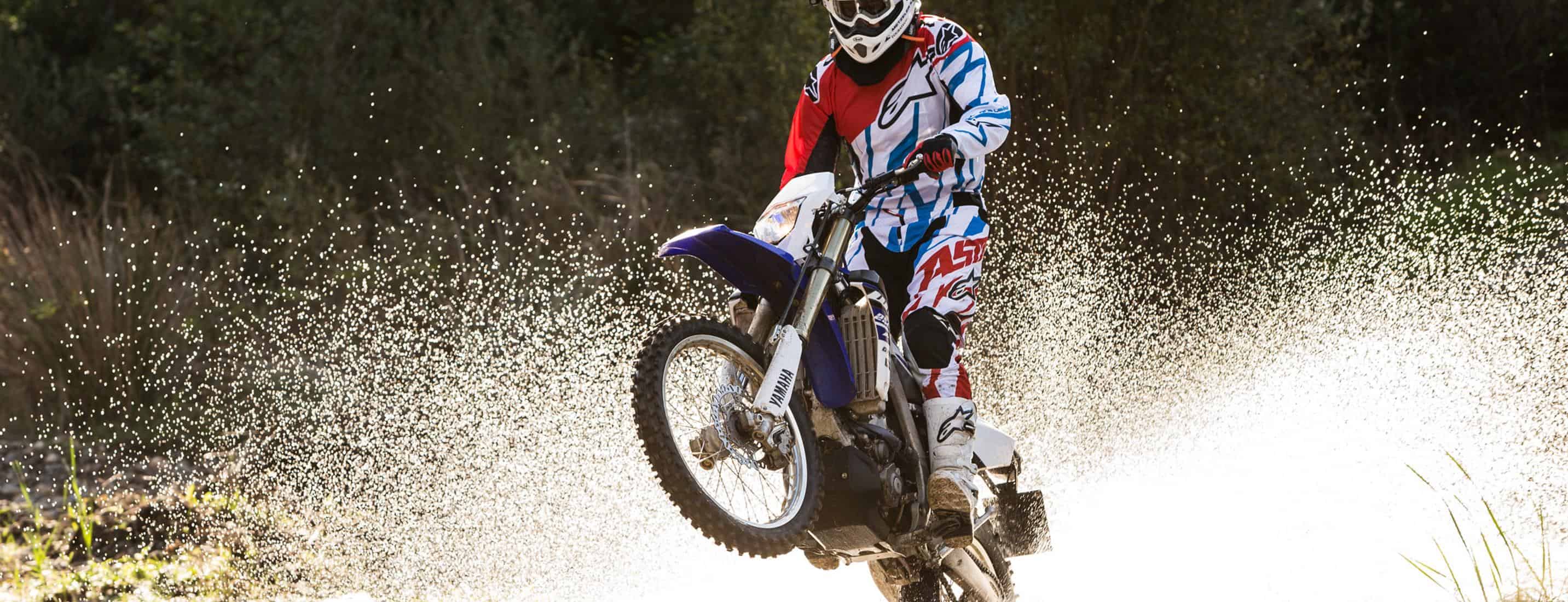

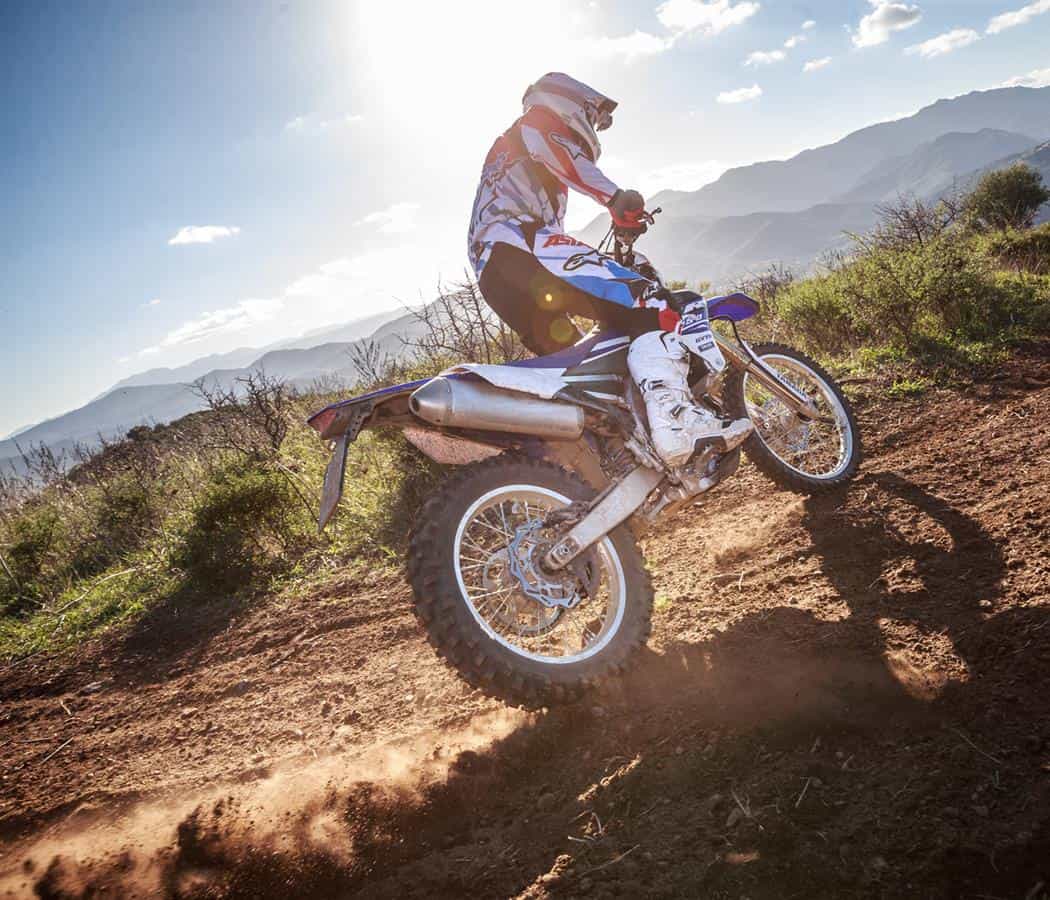

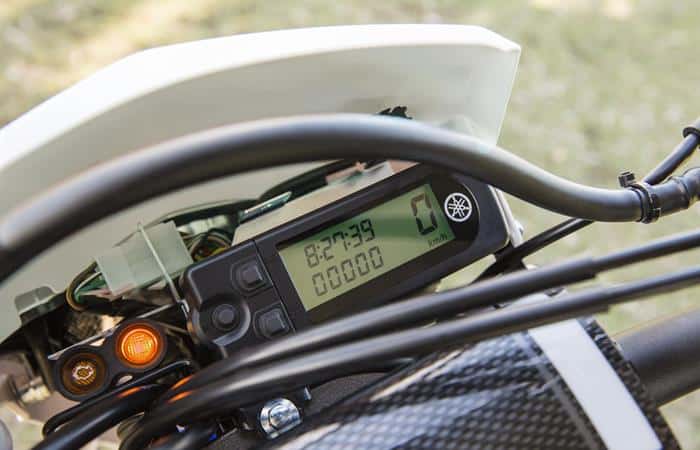
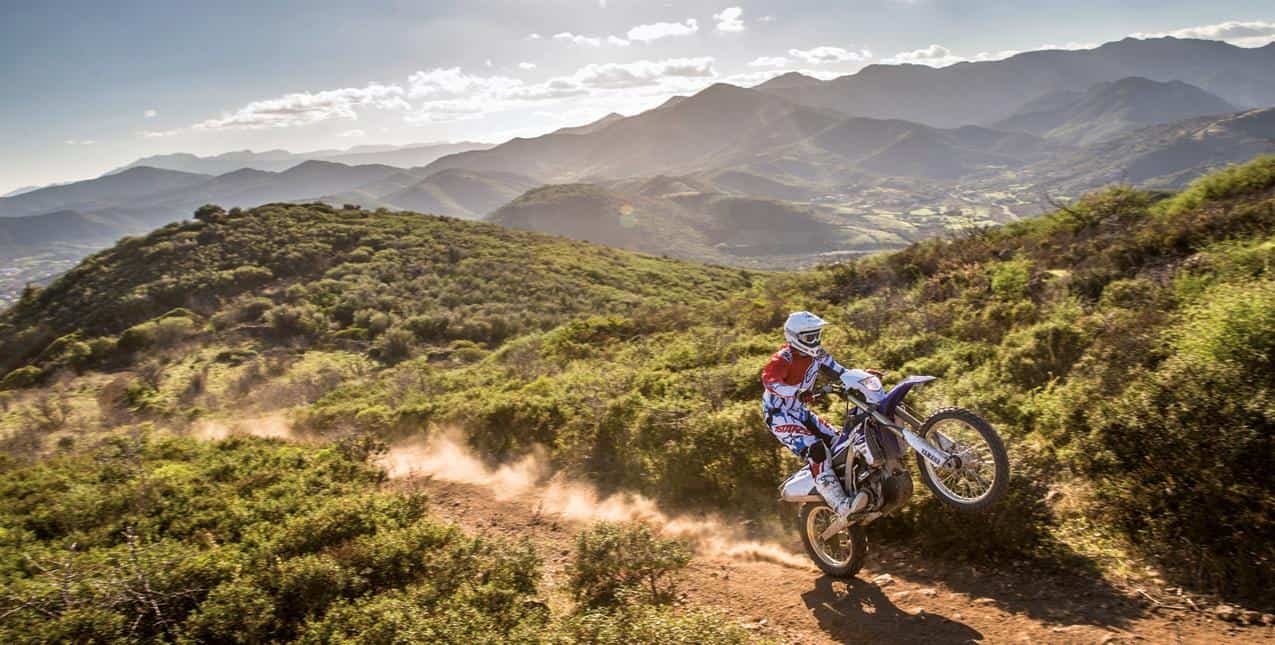
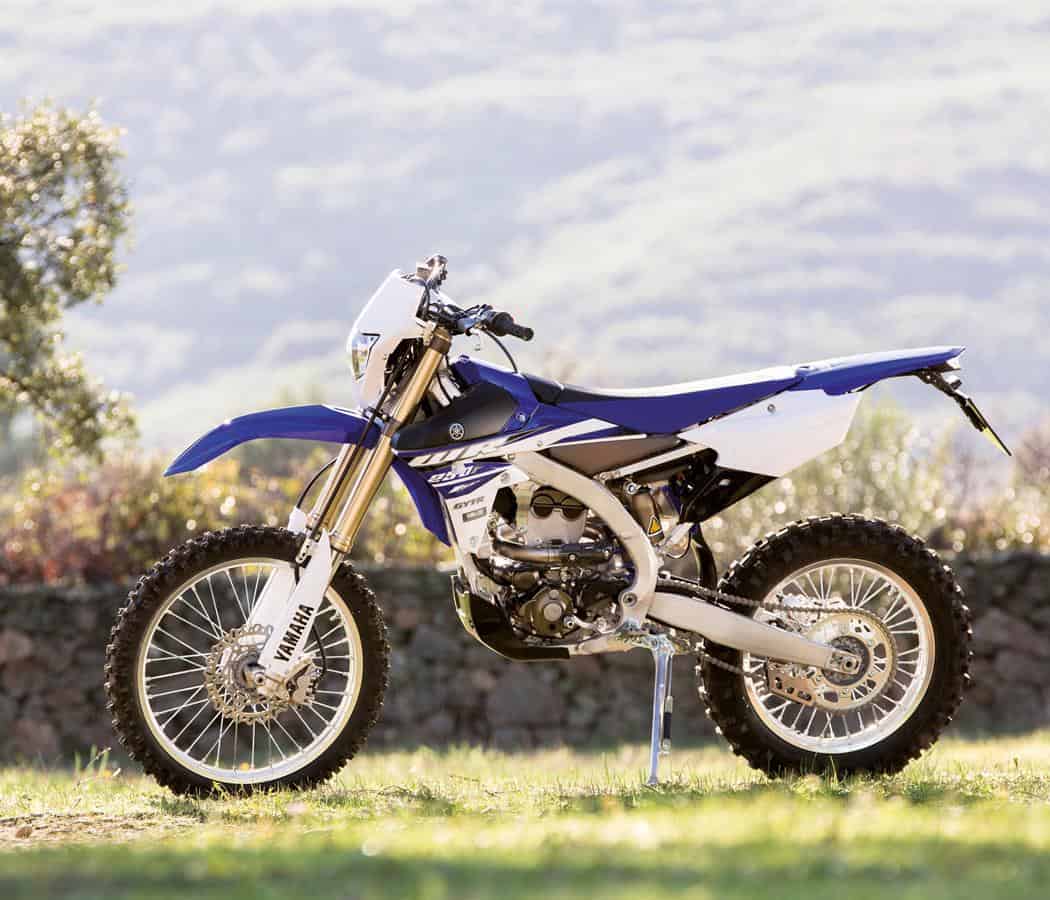
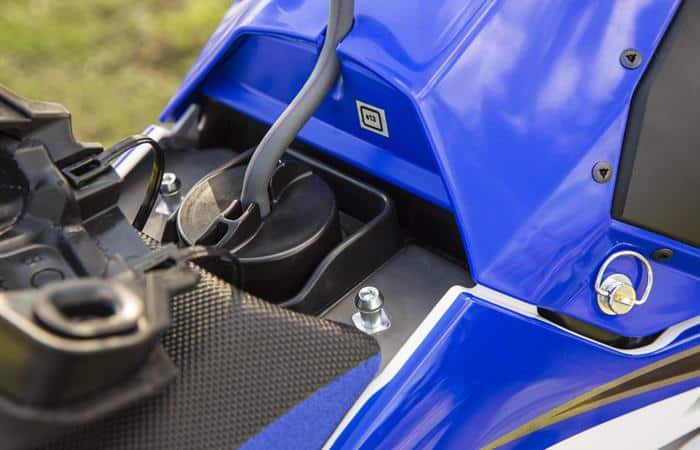

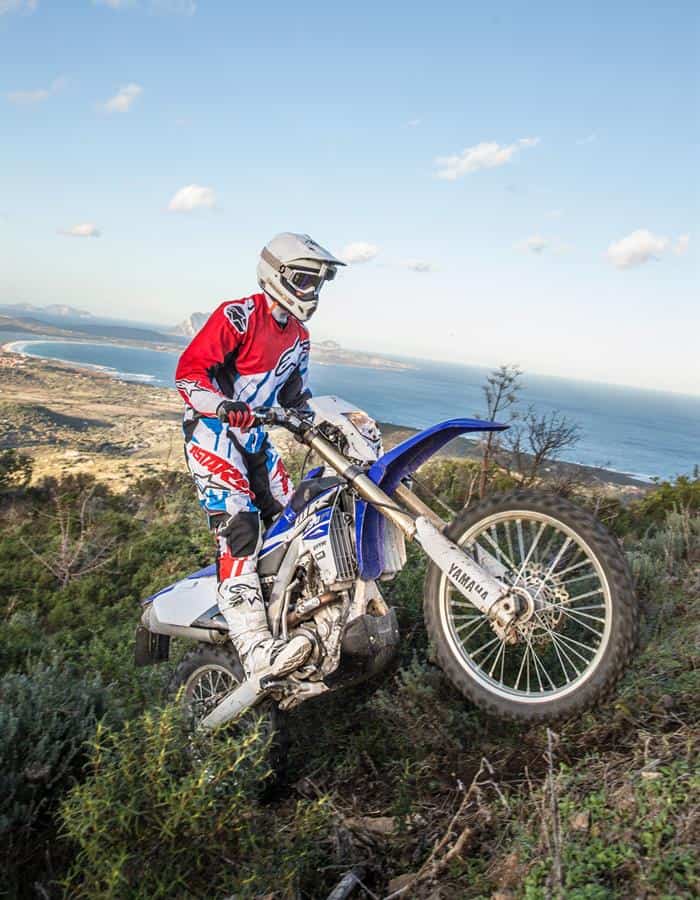
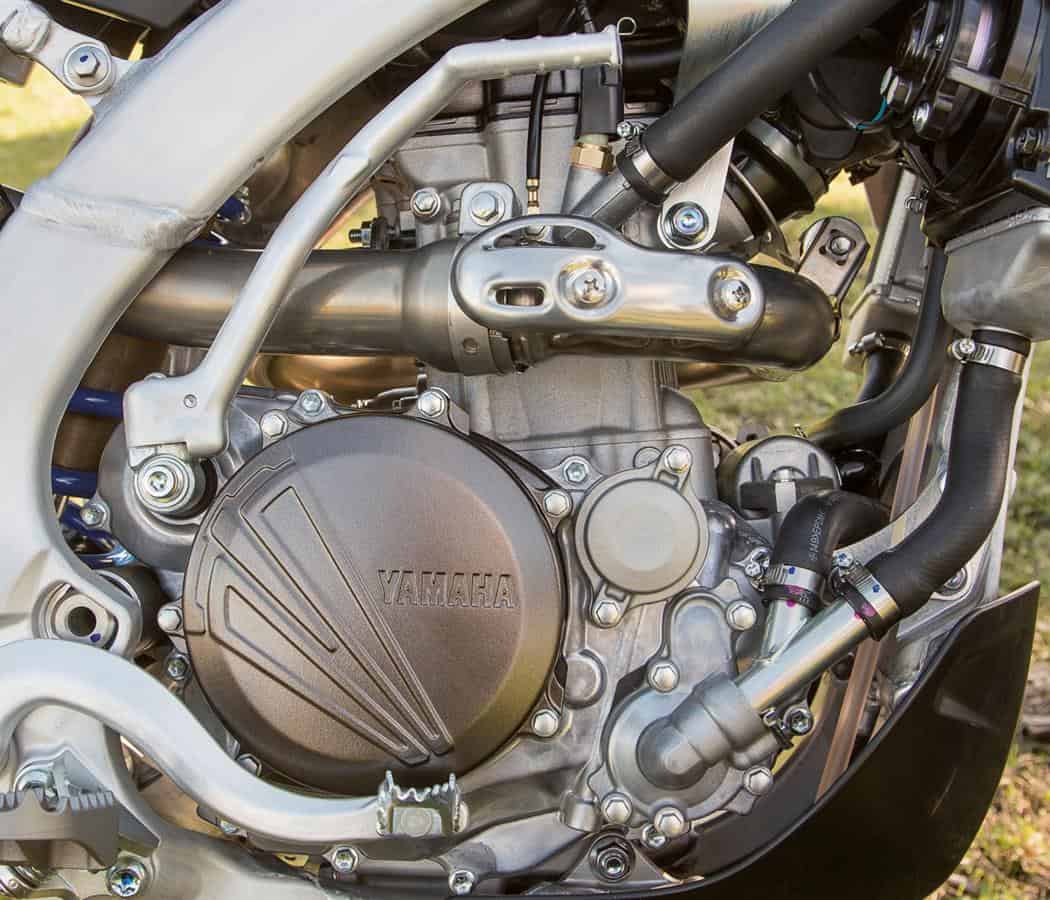
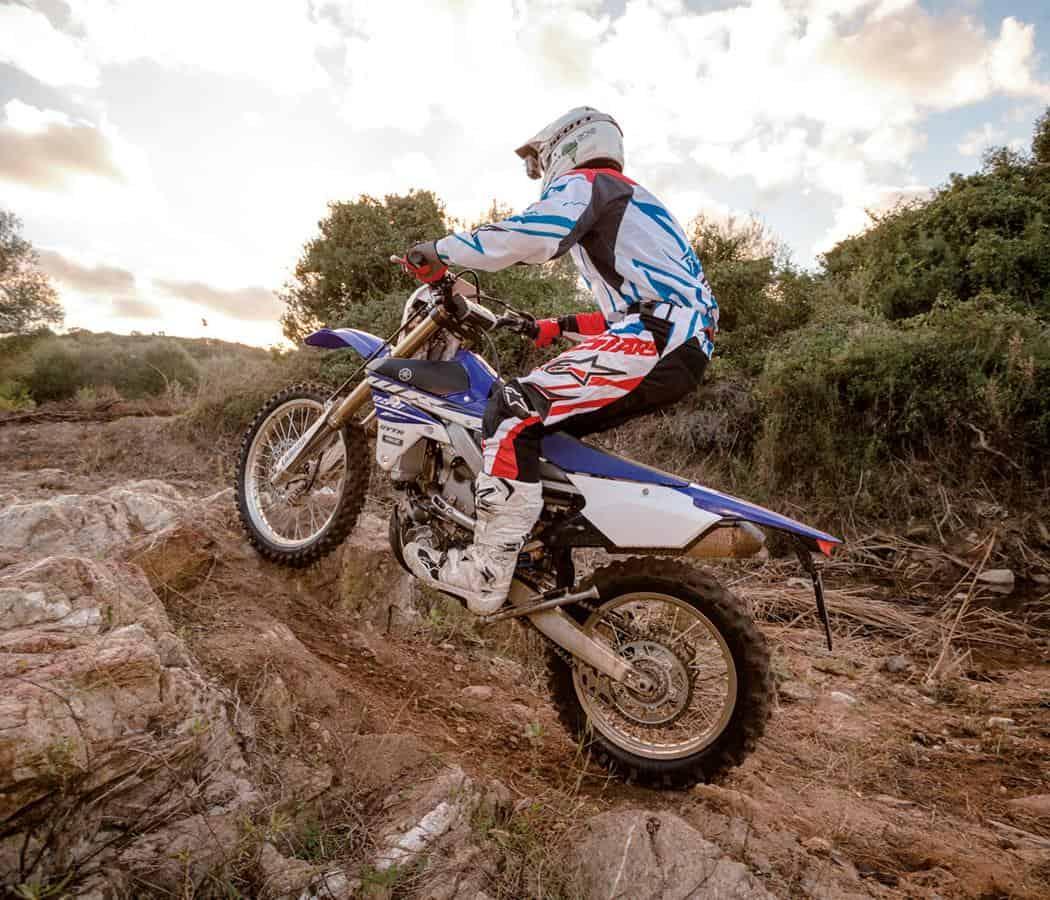
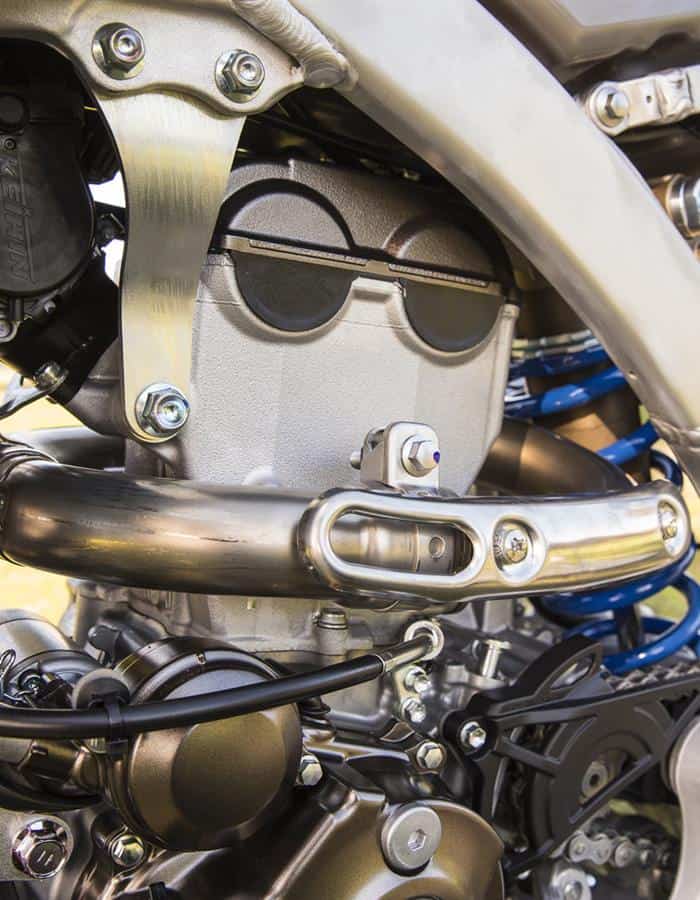
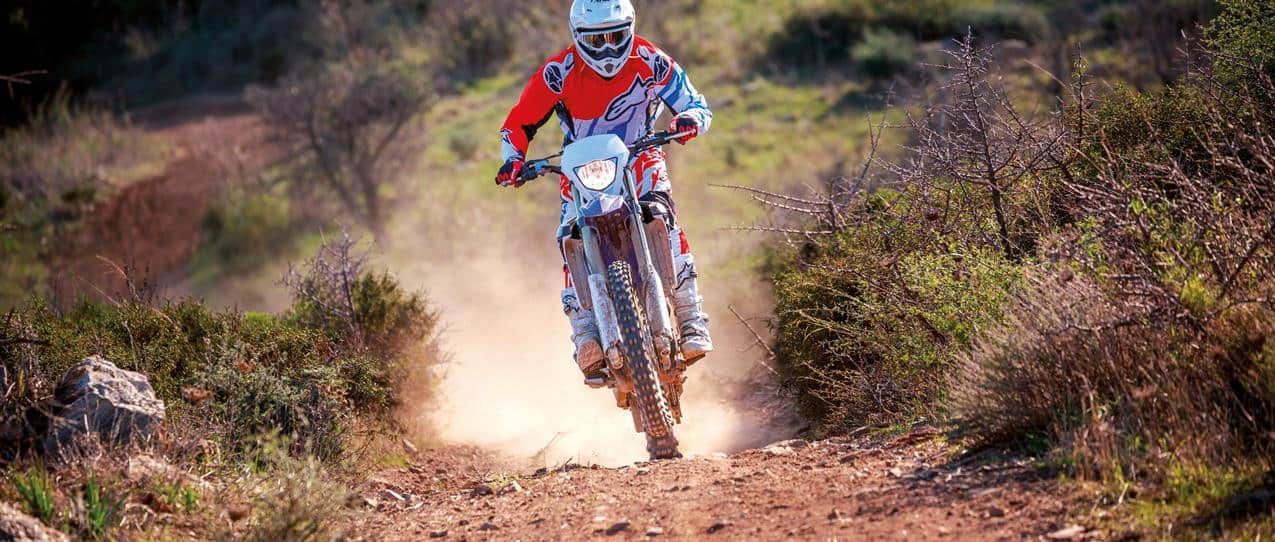
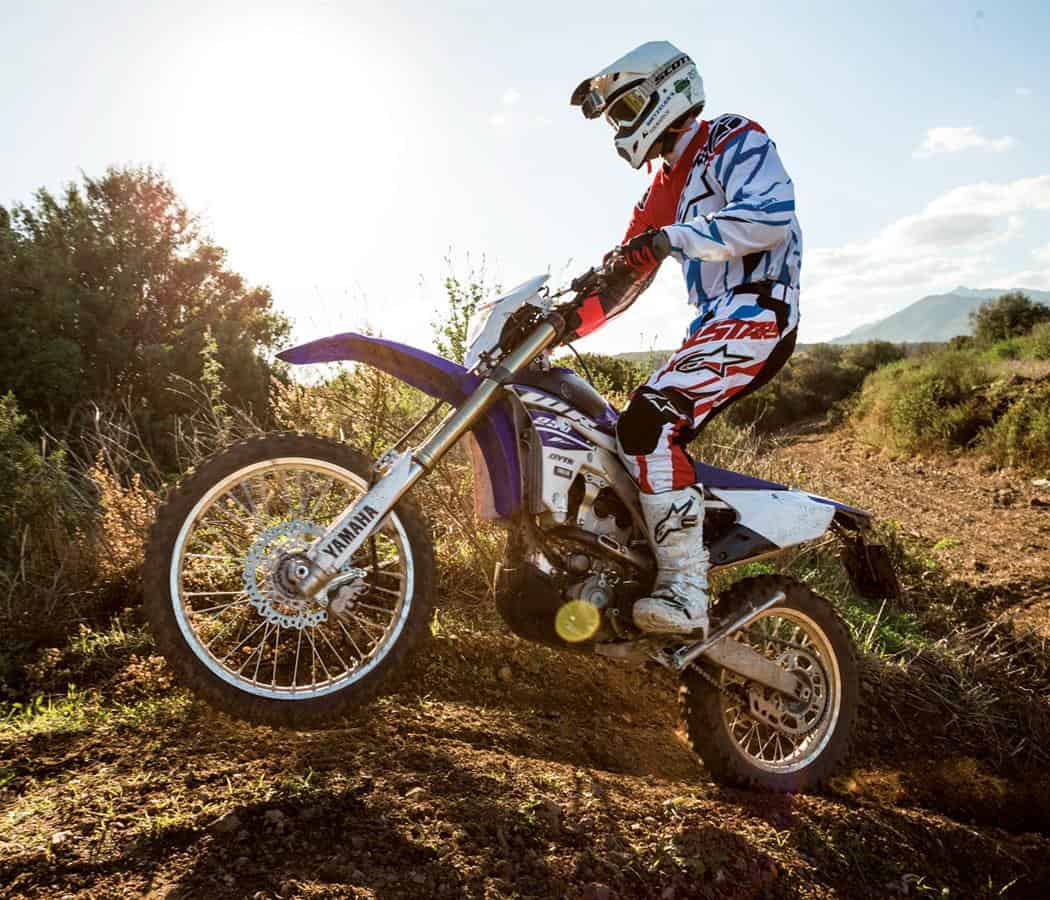
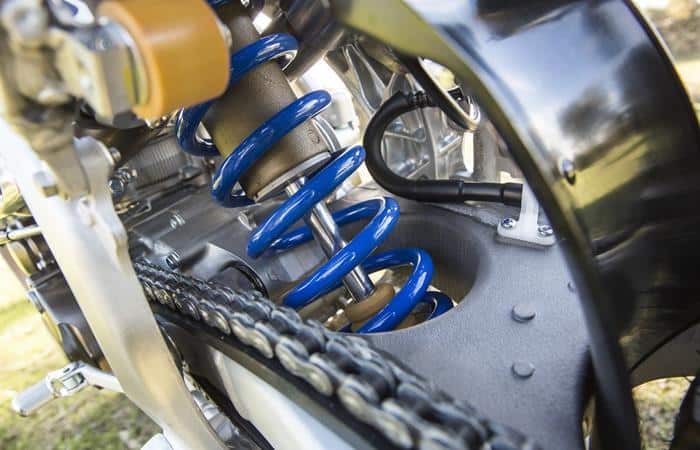
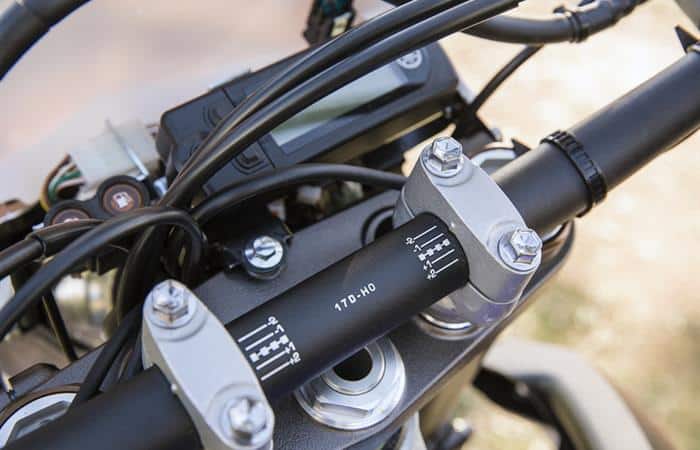
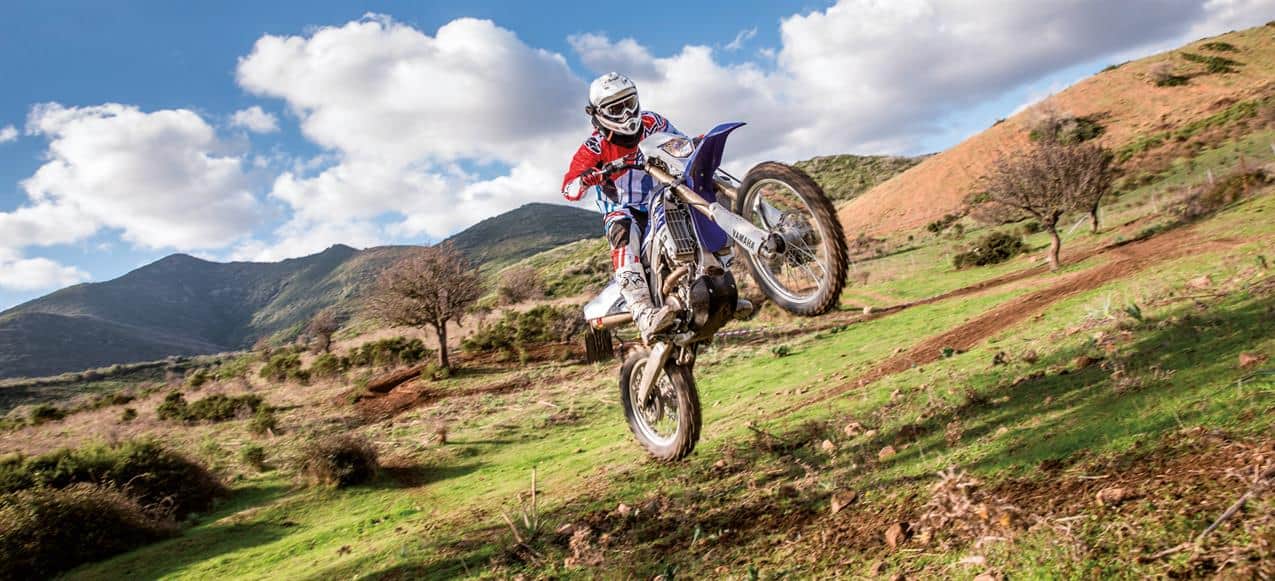
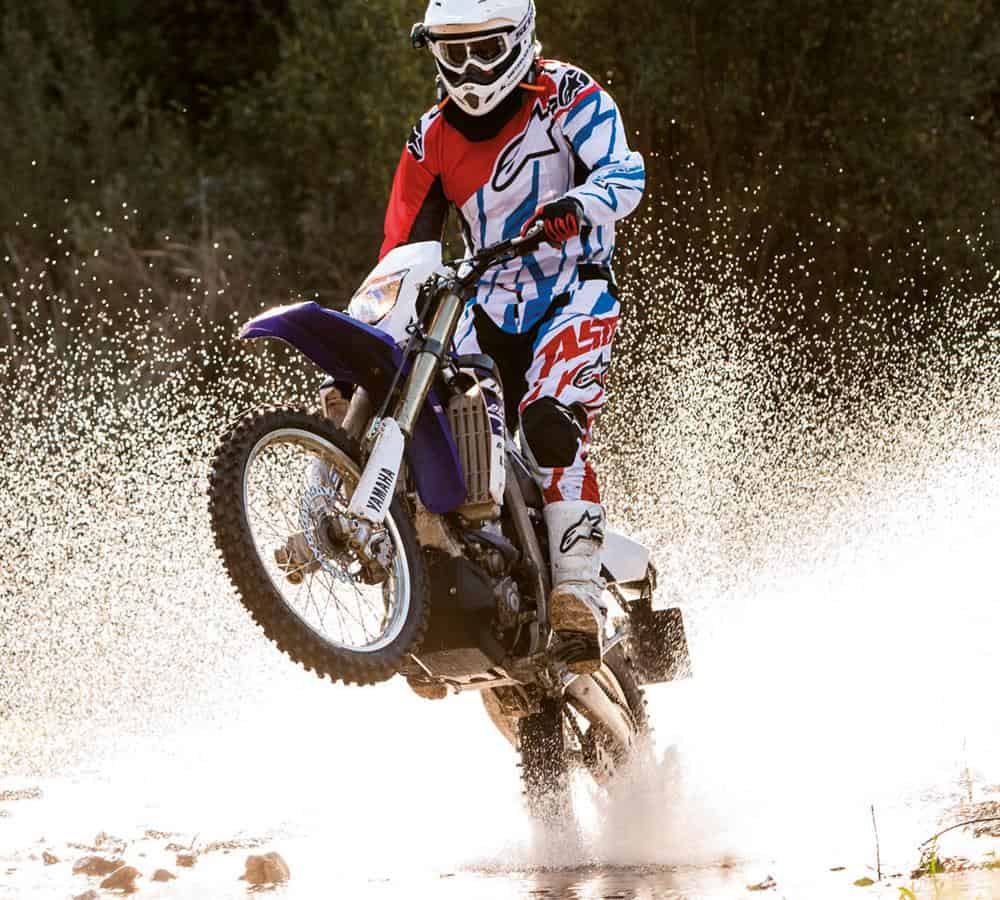
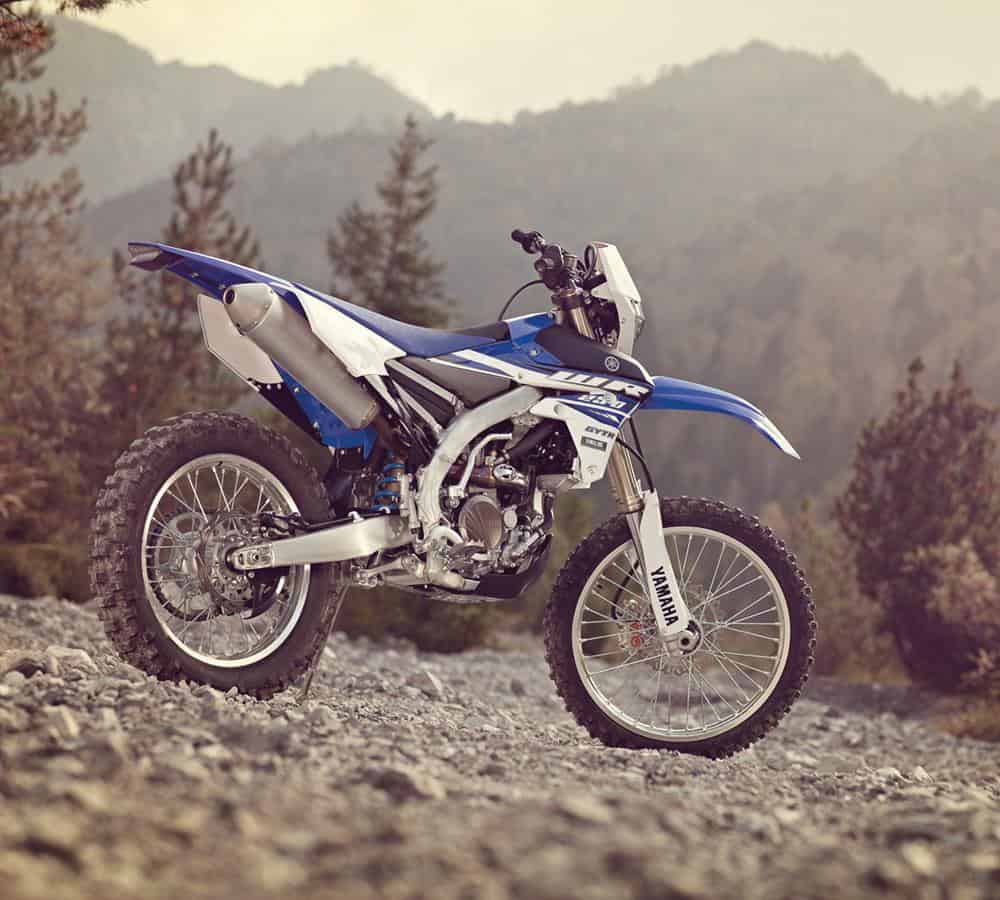

One Response
There is more YZ DNA in the WR than perhaps ever before. Only what really needed to be changed or tweaked to make the YZ a better enduro bush weapon was changed, everything else is left pure YZ. The reverse cylinder head (intake at the front, exhaust out the back), rearward slanted YZ250F engine makes it across virtually unchanged to the WR. Compression ratio, cam, titanium valves, twin-ring forged piston and carburised crankshaft are all identical to the motocross machine. The reliability in motocross has already been proven and it is fair to say that modern WR machiney has an enviable reliability record.